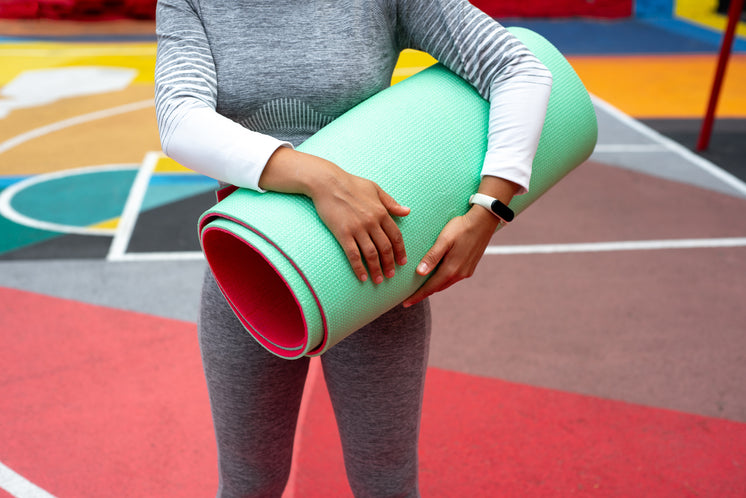Instant Solutions To Difference Between Pilates And Yoga In Step by St…
페이지 정보
작성자 Regan 작성일 25-07-02 14:44 조회 3 댓글 0본문
The focus is on improving core strength and stability, with each movement carefully controlled and synchronized with the breath. In yoga, instructors often take on a more holistic approach, incorporating meditation, chanting with mantras, breathing exercises (e.g. Abdominal Breath), and spiritual teachings into their classes. This is likely due to the emphasis on deep breathing exercises (e.g. Abdominal Breath) and mindfulness practices, which can help to regulate the nervous system and decrease stress levels. While class structure may vary depending on the style of yoga or Pilates being practiced, in general, yoga classes are typically less fast-paced, more focused on flexibility, and place greater emphasis on mindfulness and deep breathing throughout the practice. Overall, the use of music in Pilates and yoga classes can be an effective tool for enhancing the practice and creating a positive atmosphere. On May 30, 2020 (postponed from the usual "last Saturday of April), participants in the World Tai Chi Day will offer initiation classes and demonstration in public places in over 80 countries at 10:00 AM local time. Pilates places a huge emphasis on strength. The muscle contractions from Pilates will help pump the lymph to all the right places. Will Pilates tone and flatten the stomach?
Additionally, Pilates can be used as part of a rehabilitation program for conditions such as back pain, osteoporosis, and fibromyalgia. Many physical therapists incorporate Pilates exercises into their rehabilitation programs for patients with back pain, osteoporosis, and fibromyalgia. Instructors may offer variations on exercises or suggest modifications for students with injuries or physical limitations. Yoga instructors may also encourage students to explore their limits and embrace their imperfections, fostering a sense of self-awareness and self-acceptance. If someone enjoys a more spiritual practice with flowing, full-body motion, yoga may be the better choice of the two. By emphasizing proper alignment and form, Pilates practitioners can strengthen their core muscles (e.g. with The Hundred Pilates exercise), which in turn supports a healthier spine and better posture. Incorporating yoga into your fitness routine can also lead to better sleep, increased self-awareness, and a greater sense of overall well-being. Many practitioners of yoga report feeling calmer, more focused, and centred after a yoga session. This, progressively, helps the body function more efficiently. You can then start to adjust those positions using pilates principles and notice how your body feels stronger and more comfortable and supported.
Pilates instructors may also give more individualized feedback to students, tailoring the exercises to their specific needs and goals. Yoga classes often follow a standard structure, starting with yogic breathing exercises and gentle yoga stretches, leading into more challenging yoga poses, and ending with relaxation, or meditation. As we’ll explore in the next "thing", yoga can also provide a variety of physical and mental health benefits. Both practices offer unique benefits that can contribute to weight loss, but they approach it differently. However, both practices can have a significant impact on one’s physical and mental health. However, the teaching styles can differ significantly between Pilates and yoga. "Which is Harder Yoga or Pilates? Additionally, music can help participants relax and focus on the present moment, which is essential in Pilates practice. Understanding the community aspect of each practice can also help you decide which one is right for you. Many people find the community aspect of yoga to be one of its biggest draws. While yoga also offers low-impact options and modifications, Pilates can be particularly beneficial for individuals with specific injuries or limitations. While both Pilates and yoga provide numerous physical benefits, it’s important to consider the mental health benefits as well.

In a more upbeat vinyasa yoga class, fast-paced music can be used to energize participants and help them flow smoothly from one pose to the next. The tempo of the music can dictate the pace of the class, helping participants stay on track with their breathing and movements. Some studies have even shown that listening to music during exercise can increase endurance and motivation levels. By integrating Pilates into their fitness routine, individuals can not only prevent injuries but also improve their strength, flexibility, and endurance. In addition to its focus on core strength (e.g. with the Pilates Roll Up exercise), Pilates also incorporates elements of flexibility, balance, and coordination. A Pilates routine is designed to build flexibility, strength, and body awareness without gaining bulk. The practice first arrived in the West about a century ago, initially gaining popularity in the United States. It gained mass popularity in the last century with different gurus founding their own schools of thought and taking Yoga to the west. Hatha yoga is possibly the most common style practised in the western world. While some Pilates studios offer group classes, it is less common to find the same sense of community that is often found in yoga studios.
If you have any inquiries about exactly where and how to use difference between Pilates and yoga, you can make contact with us at the web site.
댓글목록 0
등록된 댓글이 없습니다.
